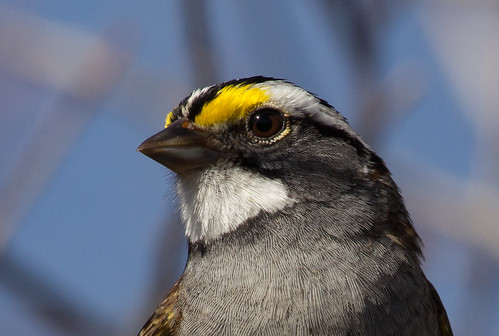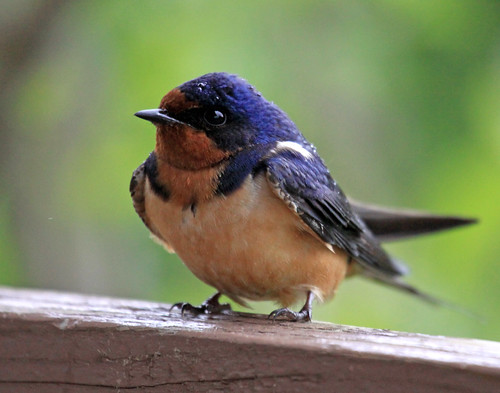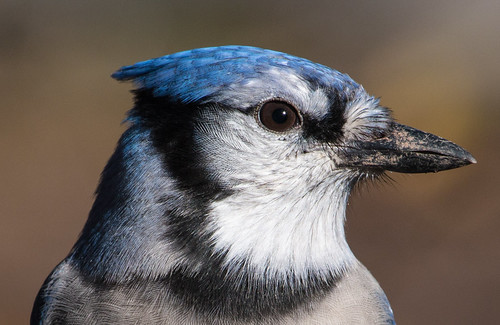In the three decades I’ve been producing "For the Birds," I’ve
done my level best to be as accurate as possible. I’ve produced over 3,000
programs, mentioning at least 722 species. Some I’ve talked about more than
others. I’ve discussed Black-capped Chickadees in at least 332 programs, and
Blue Jays in at least 278. Those are of course exceptional, being my favorite
birds, but I’ve talked about American Robins at least 257 times, and have
covered a few common birds at least 100 times: Canada Goose, Bald Eagle, Rock
Pigeon, Ruby-throated Hummingbird, American Crow, European Starling, Northern
Cardinal, and House Sparrow.
The webpage my daughter created for me at lauraerickson.com
makes it really easy to find programs, via date or species mentioned. I have
every single transcript for 1986 through 1988, along with many recordings of
the tapes, and have a lot of programs from 1989. I also have recordings of
every program aired from 2005 through now. There are serious gaps in the early
aughts, and lots of big gaps in the 90s. Christine Dean at KUMD found a stash
of several open reel tapes with programs from the 90s that she digitized for
me, and I’m little by little digitizing cassette tapes, but not all of them
have labels so it’s been an interesting exercise trying to figure out when they
aired—in a few cases I couldn’t even be certain of the decade, much less the
year. It’ll take me years to get into the database every program I still have
in some form, along with all my photos and natural sound recordings, but it’s
been a fun process.
It’s also been a sobering one. I take a lot of pride in
accuracy and sound information, but over the years I’ve made some egregious
errors. Before I get too far into this fourth decade, I want to clear the
record.
First of all, you’d think I’d have the facts straight about
Black-capped Chickadees, but for the first seven or so years I was saying that
on the coldest nights of winter they snuggle together in cavities. It turns out
that chickadees are truly the Norwegian bachelor farmers of the bird world,
very sociable but uncomfortable when other chickadees get too close. So except
during the brief window of time when adult females are brooding very tiny
nestlings, and during the brief window when nestlings sleep together before
they fledge, chickadees sleep entirely alone.
 |
| This was the last time these two chickadees were inside a cavity together. They fledged a few minutes later. |
I’ve long known that White-throated Sparrows come in two facial
color forms—those with brilliant white stripes and those with tan stripes. I’ve
also known that those colors are like our eye color—both females and males can
be either. And I knew that pairs could have one of each. So in at least one
program I stated that the birds are undiscriminating—willing to take a bird of
either color form as a mate. But it turns out the birds are highly
discriminating—in about 98 percent of all pairs, a pair is made up of birds of
the opposite color form, as if every human with brown eyes simply had to have a
blue-eyed mate and vice versa. Since then I’ve done a couple of programs
explaining how these are like Gone with the Wind characters, only in this plot
Scarlett always ends up with Ashley Wilkes and Melanie always gets Rhett
Butler.
 |
| This white-striped form White-throated Sparrow would be Rhett Butler or Scarlett O'Hara. |
Those errors were a matter of my own ignorance spreading
misinformation, but sometimes what scientists know about birds changes with
times. Several listeners have asked over the years whether birds breed up here
and also on their wintering grounds. I used to always answer no—that this is
the only place our summer birds rear young. But it turns out one population of
Barn Swallows nests in South America during our winter: it’s still unknown
whether these individual birds migrate north and also breed up here or not.
Also some birds of our American Southwest may nest again in northern Mexico
during late summer/ early fall after migrating from what we thought was their
only breeding grounds.
 |
| Does this Barn Swallow nest in South America too? |
In the coming decade I’ll try to keep my program clean of
errors so I can’t be accused of just being for the birds when I’m Laura
Erickson, speaking for the birds.
